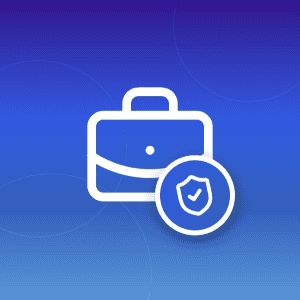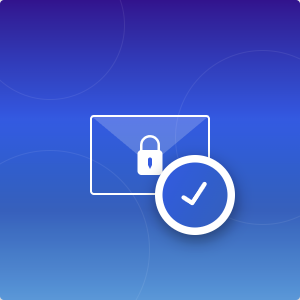Compromised passwords are like leaving your front door open, giving unwelcome guests a way into your online life.
Even one, single weak password can open doors to your private accounts, exposing personal information to cybercriminals.
But safeguarding your information doesn’t require high-level expertise. This guide will explain how passwords fall into the wrong hands, what signs can alert you to a breach, and the straightforward actions you can take to secure your accounts effectively.
What is a Compromised Password?
First things first, let’s define what compromised passwords are.
A compromised password refers to any password that has been exposed or accessed by unauthorized parties.
For simplicity’s sake, you can consider that if somebody else than you knows one of your passwords, then that password is compromised. Unless you are purposefully sharing a password in a secure way 😉
Passwords become compromised due to data breaches, malware, or phishing attacks. Later in this article, we’ll explore more in detail how passwords can be compromised. These breaches have escalated over recent years, so even if you’re extremely careful with your password best practices, you might still be exposed.
Risks of Compromised Passwords
It goes without saying that compromised passwords represent major privacy and security risks.
When passwords are compromised, attackers can potentially gain access to your accounts – leading to identity theft, financial losses, and more.
Worse even, if the same password is used across multiple accounts, a breach on one platform can lead to multiple accounts being compromised. This can put your sensitive information at serious risk.
One such high-profile case involved Mark Zuckerberg. Believe it or not, Zuckerberg re-used the password “dadada” across multiple accounts (which by the way is a terrible password). In 2016, hackers from the group OurMine managed to gain access to Zuckerberg’s Twitter and Pinterest accounts. The attackers used credentials obtained from a LinkedIn data breach that occurred in 2012.
This breach also highlighted that Zuckerberg was not using 2FA, a cybersecurity best practice that everyone can implement (more on that later).
This breach was particularly embarrassing for Zuckerberg, given his high-profile position in the tech industry. Luckily for him, no sensitive data was exposed in this case.
Looking to create an email account with no phone number required? Check out our latest guide here.
How Passwords Get Compromised
We’ve touched on it in the previous section but let’s cover some of the most common ways passwords become compromised.
Data breaches
Large-scale data breaches happen when hackers infiltrate a company’s database, exposing user information such as usernames, emails, and passwords. High-profile breaches, such as those at LinkedIn and Yahoo, have affected millions of users, making these stolen credentials available on the dark web and other forums where they can be used for further attacks.
Phishing Attacks
Phishing occurs when attackers trick users into providing their login credentials by pretending to be a trusted source, such as a bank, a popular social media platform, or a service provider. These attacks often come in the form of emails or messages containing a link to a fake login page, where unsuspecting users enter their credentials, inadvertently handing them over to attackers.
Note: phishing attacks should not be confused with spam emails, a distinction we explore in this article here.
Credential stuffing
Attackers take advantage of reused passwords by using compromised credentials from one site to access other sites. This technique, known as credential stuffing, allows hackers to quickly check a user’s email and password combination across multiple websites, giving them access to other accounts if the same credentials are used. This is why distinctive passwords are essential for each account.
Signs Your Password Has Been Compromised
Now, you might be wondering: “How do I know if I have compromised passwords”?
The most common way is when a data breach occurs. If you’re lucky, the company victim of the breach will make a public announcement.
This might be a notification, an email, or a public press release. In any case, even if the company says that “only X%” were affected, you should assume that your password is compromised.
Alternatively, you might receive one of those emails saying that “an unusual login was detected”. Always take these emails seriously and check if the timestamp actually matches when you last logged in to the platform.
Finally, you can use tools like Have I Been Pwned to check if your email account has appeared in known data breaches. Many Internet browsers also offer password monitoring features that alert you when a stored password has been compromised.
Looking to password-protect a Google Drive folder? Check out our guide here.
What Do I Do if I Find a Compromised Password?
Discovering that one of your passwords has been compromised can feel unsettling. But acting quickly can help secure your accounts and prevent further issues.
Here’s a step-by-step guide to handling a compromised password:
- Change the Password Immediately: For the affected account, choose a secure password that hasn’t been used on other sites. Use a combination of letters, numbers, and symbols to enhance security.
- Update Related Accounts: If you reuse passwords across different accounts, be sure to change those as well. Avoid reusing compromised passwords to reduce the risk of other accounts being affected.
- Enable Two-Factor Authentication (2FA): Add an extra layer of security by enabling 2FA for the compromised account and any other high-risk accounts. This way, even if someone has your password, they’ll need an additional code to gain access.
- Review Account Activity: Check for any unusual activity, such as unfamiliar logins, messages, or transactions. Most platforms offer activity logs where you can review recent actions on your account.
- Notify Relevant Contacts: If the compromised account could impact others (such as an email account used for professional communications), inform those affected. This can help others be vigilant and prevent the spread of phishing attempts.
Make sure to act promptly and thoroughly. This is how you will mitigate the risks associated with compromised passwords.
That’s it for this Guide on Compromised Passwords!
That’s a wrap for this guide on compromised passwords! Hopefully, you now have a better understanding of password best practices and how to avoid passwords getting compromised in the future.
If you’re looking to step up your online security, your first stop should be to have a private and secure email account. Here at Mailfence, we pride ourselves on being one of the most private and secure email providers out there:
- No tracking, no advertising. We do not use any third-party advertising or marketing trackers. We do not track your activity in the application. Mailfence is completely free from ads. We do not send spam or solicitations. We will never commercialize our databases or share data with any third party for targeted advertising or any other purpose.
- Strict privacy laws. In many countries, government-sponsored programs collect massive amounts of data from the Internet. This data collection is done without any search warrant, court order, or subpoena. Mailfence’s servers are based in Belgium, with strong laws protecting privacy. Only a valid Belgian court order can force us to release data. Since we have no foreign parent company, we never comply with any rogue or other data requests from either domestic or foreign authorities. We are not liable to US gag orders or NSLs.
- No VC money. Mailfence is 100% self-funded and lives through the subscriptions of our users. No venture capital, no pressure on fast returns. An established company with a spotless 20-year track record.
Ready to take the leap? Create your free account today:
Compromised Passwords? Simple Steps to Protect Your Accounts Today – FAQ
A compromised password is one that has been exposed to unauthorized parties due to data breaches, phishing attacks, malware, or credential stuffing. If someone other than you knows your password, it is considered compromised.
Signs include receiving notifications of unusual logins, alerts from services like Have I Been Pwned, or announcements from companies about data breaches. Regularly monitor your accounts for suspicious activity.
The first step is to change your password immediately and enable 2FA. Make sure to update any other accounts that were also using that password. Make sure to notify your friend, colleagues and family in case they receive suspicious messages from that account.
Use strong, unique passwords for each account and store them securely with a password manager. Enable 2FA for added security and stay vigilant against phishing attempts. Regularly update passwords and avoid reusing them




